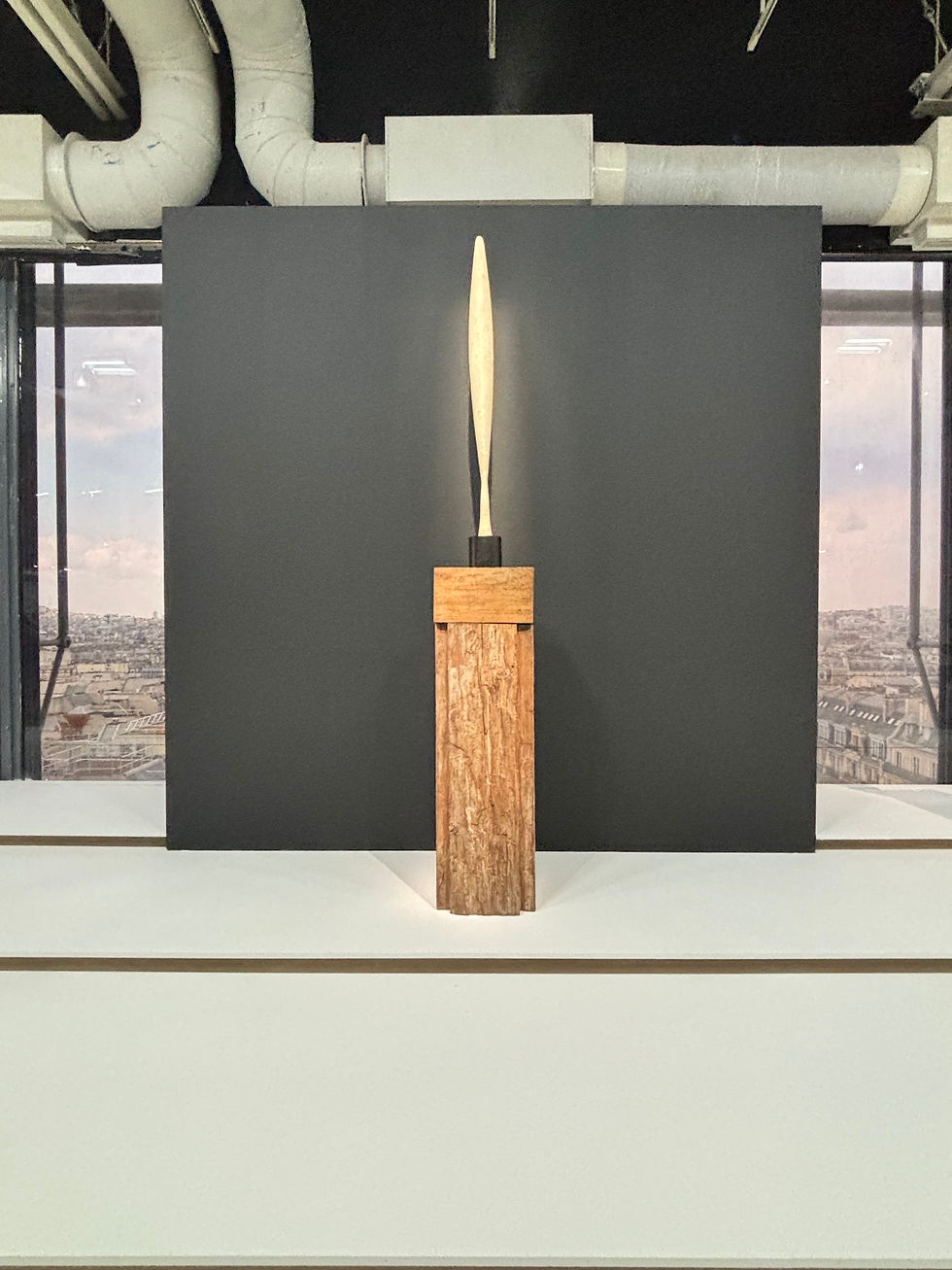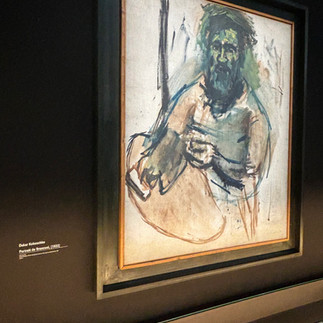Best ever BRANCUSI retrospective in Center Pompidou: "I have never wanted to be a sculptor" .
- Zoe Chambers

- Jun 25, 2024
- 3 min read
"I have never wanted to be a sculptor. Nor have I been. I am a worker in direct contact with nature," said Constantin Brâncuși, the sculptor of the 20th century who redefined sculpture for the next few centuries. Pompidou Center pays an hommage to the master with the most spectacular Brancusi retrospective exhibition in the world.
This year marks a triple celebration of pivotal moments in art history and a grand retrospective of a leading 20th-century sculptor. As 2024 unfolds, we commemorate 150 years since the first Impressionist exhibition, 100 years of Surrealism, and a global retrospective of one of the sculptural titans of the 20th century, Constantin Brancusi.
In a harmonious convergence, Paris and Tokyo have both unveiled exhibitions that pay homage to Brancusi. The Pompidou Center in Paris and the Bridgestone Museum in Tokyo offer tasteful, minimalistic displays that reflect the spirit of the late Romanian master.
Constantin Brâncuși, born on February 19, 1876, in Hobița, Romania, showed an early talent for carving. He pursued his studies at the School of Arts and Crafts in Craiova and the Bucharest National University of Arts. In 1904, Brâncuși moved to Paris, enrolling at the École des Beaux-Arts and briefly working in Auguste Rodin's studio. He famously declared, "Nothing grows under the shadow of big trees," and soon set out to develop his own unique style.
Brâncuși's work is renowned for its abstraction and reduction to essential forms, capturing the essence rather than the literal representation of his subjects. His notable works include "Sleeping Muse," "Mademoiselle Pogany," and "Bird in Space," the latter central to a landmark U.S. legal case defining art. Drawing inspiration from Romanian folk art and African and Oriental influences, Brâncuși left a lasting impact on modern sculpture. He continued his innovative work in his Montparnasse studio until his death in 1957, having become a French citizen in 1952.
The current Pompidou Center's exhibition exceeds all expectations, offering a comprehensive, creative, and diverse homage that Brancusi himself would have admired. The exhibit begins with a detailed timeline of Brancusi's life, featuring photos, documents, and artworks by Brancusi and his contemporaries like Picasso, Modigliani, and Man Ray. Pascal Rodriguez, the scenographer behind the exhibition, created an innovative and easy to adjust and digest display with rich narrative from thousands of documents, photos and newspaper cuttings. Not mentioend that Brancusi was a skillful and talented photographer himself and exhibition does show his photographical heritage in its best too.
Central to the exhibition is a recreation of Brancusi's studio, bequeathed to the French state and preserved at the Pompidou since 1957. This space, filled with wood-cutting equipment and the artist's tools, offers an intimate glimpse into Brancusi's creative process.
The exhibition’s highlight is a majestic display of "Birds in Space" in various sizes and colors, set against the backdrop of spectacular Paris cityscape from the sixth floor of the Pompidou Center. The creative scenography, with its thoughtful use of light and color, enhances the viewer's experience, making Brancusi's works shine in a new light.




Historical pieces from the Louvre create a dialogue with Brancusi's work, showcasing his sources of inspiration. This exceptional collection, alongside the Pompidou's extensive Brancusi holdings, provides a rare opportunity to appreciate the breadth of his legacy.

The exhibition is a testament to the meticulous work of curator Ariane Coulondre, whose dedication to Brancusi's legacy is evident throughout. Despite its three-month run, the exhibition's popularity suggests it might travel to Germany next.
Both the Tokyo and Paris exhibitions are essential for art enthusiasts. The Bridgestone Museum’s show offers a therapeutic minimalism, while the Pompidou Center’s exhibit provides an in-depth exploration of Brancusi’s life and work. Together, they offer a fitting tribute to a master sculptor and celebrate the enduring impact on the art world.











































































Comments